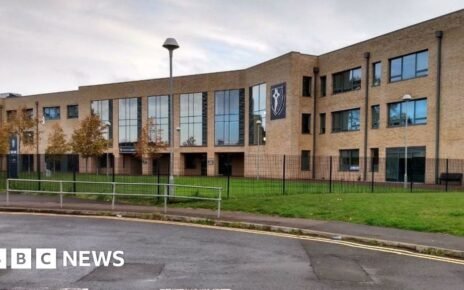 Getty Images
Getty ImagesA new study says north-east England will continue to have the highest rate of children being excluded and suspended from schools in England.
According to research by the thinktank IPPR and charity The Difference, Redcar and Cleveland, Middlesbrough, Hartlepool and Newcastle are among the worst places for children missing out on education.
The reports also highlights a direct link between deprivation in the region and high suspension and exclusion figures.
Middlesbrough Council said it was a “trend we are determined to reverse”.
Middlesbrough’s exclusion rate of 28.18% is three times the national average, while Redcar and Cleveland’s is even higher at 32.79%. Hartlepool comes in at 19.81% and Newcastle with 16.68%.
Efua Poku-Amanfo, co-author and IPPR research fellow, said the correlation between poverty and exclusion levels would “make regional divides harder to tackle”.
“When it comes to things like closing the attainment gap between the North East and other regions and strengthening local economies, all of that is compromised by the high exclusions and suspension figures.”
‘Out of control’
Researchers looked at preliminary figures from the last school year and said they indicated a likely 20% increase in exclusions and suspensions from 2022/23, which in turn jumped by 36% from 2021/23.
Middlesbrough Council acknowledged it was a problem for the area and deputy mayor Councillor Phillipa Storey said the rates were “too high, reflecting high levels of deprivation”.
She added: “The work we are doing with schools and academies is starting to deliver results and it is essential that we maintain that momentum.”
Sunderland University’s Dr Sarah Martin-Denham has been a long term campaigner on reducing the rate of exclusion in schools, but believes schools do not have the resources, specialist staff or freedom to expand the curriculum to cope.
“You can’t continue to have figures like this. They are out of control,” she said.
“It means the children are not learning, they are not developing those relationships, and they are not going to get the careers they want, so it does probably follow them into adulthood.”
‘Demand’
The Link in Sunderland caters for about 200 children who have been or are on the verge of being excluded, using smaller class sizes and specialist staff to work through the problems.
It said almost all its GCSE pupils last year went on to further education or training.
But it begins a new term almost at capacity, meaning it will be able to take on very few excluded children this year.
Headteacher Donna Walker believes it will remain that way for “at least the next three to five years”.
“I think demand will always outstrip supply until and unless more resources are made available, whether in mainstream education or the expansion of specialist schools like us,” she added.

A spokesperson for the Department for Education said the rising numbers were “shocking” and showed the “massive scale of disruptive behaviour that has developed in schools”.
“We’ve already committed to providing access to specialist mental health professionals in every school, introducing free breakfast clubs in every primary school, and ensuring earlier intervention in mainstream schools for pupils with special needs,” they added.




